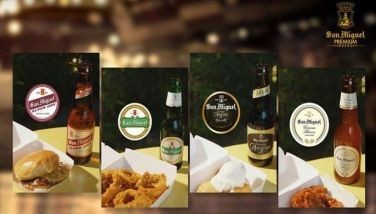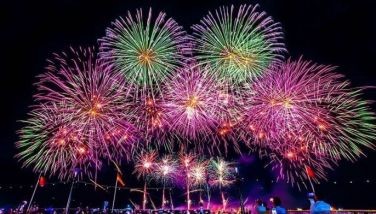A Tale of Three Cities
CEBU, Philippines - After the flip-flop ruling on their cityhood status, the cities of Bogo, Carcar and Naga are out to prove they deserve to be cities.
The three were declared cities in 2007. However, their cityhood status were questioned by the League of Cities and, as a result, their Internal Revenue Allotment was reverted to municipal level. But last year saw the affirmation of the three areas as cities.
Welcome to the newest component cities of Cebu, and see them grow.
The Trade City
Trading is the lifeblood of Bogo City's economy, said City Mayor Celestino E. Martinez Jr. A look at the city’s business center will prove this claim. The city may have been known as an idyllic farming and fishing town in the past but now, the city business district is bustling with activity.
The growing trade and industry led to the expansion of Bogo City. The public market was moved to a bigger area; a portion of the shoreline had to be reclaimed; a new business center had to be created, all these to ensure movement of people and goods.
Located 100 kilometers north of Cebu City, Bogo City has the biggest livestock market in the province, thanks to the city's ports. Water transport made the movement of people, goods and livestock easier.
And the city’s famed water transportation will also take tourists to the idyllic islet of Capitancillo, the area’s top destination. Now also a marine sanctuary, Capitancillo has a solar-powered lighthouse, and is a beautiful dive site.
The Heritage City
Carcar City, about 40 km southeast of Cebu City, is an agriculture-based economy with a few industries on the side, foremost are the locally made products. Their shoe making industry, wood crafting and native delicacies like their famous chicharon (pork crackling), ampao (sweetened rice crispies) and bucarillo (colored coconut strips), encourage entrepreneurship among the people of Carcar.
Tourism may be negligible according to City Mayor Nicepuro L. Apura but there is no denying that the notoriety of the city lays with its heritage structures - the Greek-Orthodox style inspired Church of St. Catherine of Alexandria; Spanish and American period houses along the streets; the Carcar Dispensary building, which has been turned into the Carcar City Museum not only because it stores articles that tells of Carcar City's rich history but also because of the building's art deco design.
As beautiful as these heritage sites are, the city refuses to be stuck in the past. With the coming light, steel and other commercial industries, Carcar City is sure to be a city of a rich past and a promising, rich future.
The Industrial City
Naga City, 21 kilometers south of Cebu City, may be "very poor" when it comes to tourism as City administrator Engr. Arthur Salazar Villamor puts it, but it has quite a number of industries and companies that the city has been deemed the industrial hub in southern Cebu.
The physical profile of Naga alone doesn't sit well with tourism and agriculture than with businesses. Villamor estimated that 60 percent of the city's land area is considered timberland, which makes the cut for the city's economy; in fact, during the Spanish era, coal mining was the precursor of the city's industrialization.
The Baywalk Park may have caused an influx of visitors especially during weekends but tourism is presently not a major industry, as opposed to businesses.
Among the business in the city are the Salcon Power Corporation power plant, Korean Electrical Power Corporation, KYOCERA Kinseki Philippines Incorporated, Rikio, RSA (Rikio Southeast Asia) and Bounty Fresh chicken dressing plant in the north. The APO Cement Plant and the Sarimanok Feed Mill is in the southern part, while in the southwest are the Sherilin Agro-Industrial Corporation and the quarry and mining companies.
Business and license fees from these companies contributed much to its healthy economy and workforce, as it also generates work for the Naganians. But Naga City also makes sure that environmental concerns are addressed despite the bustling business in the city. It has a materials recovery facility that converts wastes to alternative fuel and organic fertilizers.
Bogo, Carcar and Naga have truly shown that they deserve to be called cities. The projects initiated by the local government units and the way they have kept their economies afloat are proof that the questions on their cityhood made them show their best.
- Latest
- Trending























